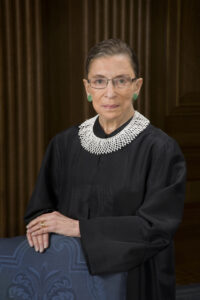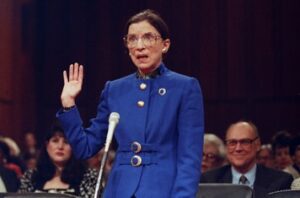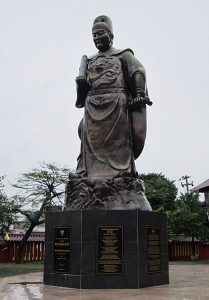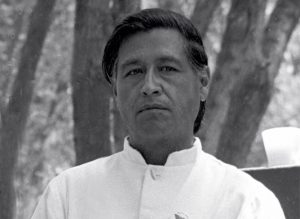Ruth B. Ginsburg’s powerful quote, “Real change, enduring change, happens one step at a time”[ 14. “Actual change, Enduring Change, and occurs one step at a time ”-Ruth Bader Ginsburg- HPC- HIGH PERFORMANCE COUNSEL #HIPCOUNSEL says, “‘Real Change, Enduring Change, Happens One Step at a Time.’ – Ruth Bader Ginsburg,” Real Life Practice, March 31, 2011, https://www.reallifepractice.com/2020/10/real-change-enduring-change-happens-one-step-at-a-time-ruth-bader-ginsburg/.] resonates with many because it underlines the importance of perseverance despite slow progress. This message is particularly meaningful to me as it emphasizes the need for hard work and unwavering commitment to create positive change. Ginsburg embodied this philosophy throughout her legal career, especially in one of her early cases, Frontiero v. Richardson.
In fact, people still think of this case as being one of the cases that helped push her career into the limelight. It also helped her gain recognition in the justice system as a strong female who stood up for her beliefs and was an activist for others. She showed admirable dedication and sympathy to the case revolving around the inequality women faced when it came to benefits from the military. There were instances when men would receive benefits from the government, but for women, they were turned down and denied benefits for the same claims. Ginsburg first received this case early in her career, in 1972. The case had already gone to trial once at the state level, which was lost by the female plaintiff. But for the appeal, she reached out to Ginsburg and asked her to participate in the trial as well, to help them make a stronger case. Then, with the help of the ACLU (American Civil Liberties Union), they worked together to get this case in front of the Supreme Court. This was also the first case in which Ginsburg argued in front of the Supreme Court, in favor of Sharron Frontiero.1 This case would also be known as one of the biggest cases in her career, where she fought for women’s rights and left an impact on future generations and procedures when it comes to similar circumstances.


To set the scene for you, I will talk about views on women at the time, and how many women tried to fight against these views. Some examples of what women were going through are highlighted in the books Woman the Origins of Liberal Feminism in the United States, 1820-1920 by Suzanne Marilley, and Woman Suffrage and the New Democracy by Sara Hunter Graham.2 These works talk about topics such as gender inequality, sexism, and bias against women. Women in the United States were facing many struggles in achieving gender equality from the 1970s until the late 1990s. Gender inequality had always been around. It also was a fight that had its ups and downs in terms of reaching equality between women and men in the U.S. Women experienced discrimination in the workforce, in institutions and in schools, and even in our justice system. Women were trying to fight back against this discrimination in many ways. Some created civil rights movements and others appealed to judges and courts to show that this treatment was unconstitutional.
Ruth B. Ginsburg’s presence with cases that were related to civil and women’s rights was very well known at the time. She also helped in many different unions for women. Elizabeth Hilfrank writes: “Then in 1972, [Ginsburg] helped start the Women’s Rights Project for the American Civil Liberties Union.”3 This case became apparent to Ginsburg in 1972. She would also later give a passionate speech on January 17, 1973, in front of the Supreme Court for the first time in her career. The case was first brought to light by Sharron Frontiero in the 1971-1972. Frontiero was a lieutenant in the Air Force when she first brought this lawsuit against the government because she wanted a housing allowance for her spouse and family. Sharron Cohen stated that “a serviceman could claim his wife as a dependent and automatically receive benefits, regardless of a wife’s financial dependency on her husband.”4 However, she could only claim the benefits if she could prove that her spouse was 75 percent dependent on her. So, they told her that she was not eligible for a housing allowance, or that they could not give her one because, as a woman, she needed to prove that her spouse was 75 percent dependent on her and her paycheck. But her husband had also been in the military and was receiving money from the G.I. bill, making it almost impossible for her to claim him as a dependent. Spouses would automatically receive this benefit if their husbands applied for this benefit given by the military. But, because Frontiero was a woman, they were making her prove that her husband was reliant on her. In her case, she fell a little bit below what was needed to receive this help from the government by its standards. The only difference in these cases was that she was a woman who was trying to get a benefit for her husband instead of the “usual” scenario, where a man would apply for this benefit for his family. She felt wronged that many of her fellow male soldiers did not have to go through this process and were just given the benefit with no questions asked. But because she was a woman, they were being picky and thorough to make sure she qualified for this benefit.
So, Sharron Frontiero hired a lawyer named Joe Levin, but even with all the evidence that they gathered and verbal battles throughout the trial, they later faced news of losing the case. But they did not give up there, and this was largely because, after reaching out to Ginsburg, she listened to what the case was about in great depth and felt compelled to be an active participant. She also felt a connection to the case as a fellow woman who was sympathetic to the struggles of women in their place of work. She felt strongly that she could help Frontiero and Levin win the case if it got taken to court. She immediately joined their fight and helped compile evidence all together about anything that could help tip the trial in their favor. Little did she know that this would be one of the first times she would argue in front of the Supreme Court and that it would be remembered for the rest of her career. She thought that this blatant show of discrimination because of one’s sex was unacceptable and needed to be challenged. Ginsburg argued for Frontiero throughout the case making many strong points, and you could feel the weight of them in court. She mentioned that the strict scrutiny standard should be at the forefront of the jury’s mind when thinking about this case. Most discrimination cases only look at these types of circumstances as intermediate scrutiny. Strict scrutiny is a very strict review that can be done when involving government-regulated parties or relationships, whereas intermediate scrutiny only reviews federal rulings if they negatively affect a protected class of people. Another point that Ginsburg brought up in the case was a statement made by Sasha Grimke. Ruth B. Ginsburg quotes her saying “I ask no favor for my sex. All I ask is that our brethren take their feet off our necks.”5 After she made this statement, we get an even greater sense of the discrimination that was going on in the case and in the actions of the government in charge of overseeing the military. This statement left a big impression on those people in the courtroom. They later heard, on May 14, 1973, that the case ended in their favor. The ruling was 8-1 that unequal military benefits could not be dispensed based on the gender of the soldier/personnel. However, Ginsburg’s goal of establishing strict scrutiny as the standard to be used for future cases was lost by one vote, making it so that only the intermediate scrutiny would be used in today’s courtrooms and by our legal system.

Ruth B. Ginsburg faced discrimination by fellow male peers and by the media at the time while in the courtroom when she was advocating for this case. She also faced discrimination for the work she was doing before this case when she was in New York working on forming the WRP (Women’s Rights Project). There was a lot of debate about whether Ginsburg would even be the right one to give the argument in front of the Supreme Court. She faced many challenges in this case, but she powered through them, and in the end, she was a major factor in their victory. She would also be known for helping in some other famous cases such as the Reed v. Reed case. This case involved a law in Idaho that property was more likely to go to the men instead of the women if there were other possible options for gaining ownership. This case involved a separated couple’s son who died and the government was trying to decide who to give the land to. The mother had stated that after they divorced the father was absent for most of their son’s life and was not really involved with them. But even under these circumstances, they gave the land to the ex-husband. One statement that was made during this case was “men are better qualified to act as [administrators] than are women.”6 That was until Ginsburg stepped in, and in the retrial, she helped the mother gain the property and changed how future cases would be handled so that they didn’t automatically favor the male side, and were neutral.
Ginsburg also participated in the case of United States v. Virginia. This case involved the issue surrounding the Virginia Military Institute, as it was a male-only institution. She was a part of the United States side in this trial as she could not stand the discrimination that women in Virginia were facing. Especially the unequal opportunity for women and the resources they could use when compared to their male counterparts. The United States sued VMI because this was unconstitutional as it didn’t allow women to have the same opportunities males were getting by going to that institution. The ruling ended up in their favor and Virginia was told that the Supreme Court ruled that VMI’s male-only admissions policy violated the Fourteenth Amendment’s Equal Protection Clause. They either needed to allow women to join that institution or they needed to provide another institution that was equally equipped for women to attend instead.7 That way it was fair to both sides. Ruth B. Ginsburg played a pivotal role in both of these cases just as she did in the Frontiero case. She even made it so that following these case rulings future laws and regulations were fixed. This helped women who were in similar situations to fight back against those trying to limit them or discriminate against them, further making her mark as an advocate for women’s rights.

Taking a look at Ruth B. Ginsburg’s earlier years in her career and later achievements, we can see how deeply she felt about the issue of gender equality. Sources say that Ruth B. Ginsburg got her passion for learning from her mother and never let anything stand in the way of her education. Stating that “Ginsburg’s mother instilled a love of education in Ginsburg…” 8 When she just started, it’s said that “she went to Cornell before moving on to her more well-known colleges…. Ginsburg’s undergraduate education at Cornell from 1950-54 served as a strong foundation for her subsequent legal education and notable career.”9 She then went on to go to law school at Harvard and Columbia. Her interest in law stemmed from the gender discrimination that she saw and the people around her experienced. At the beginning of her career, she experienced gender discrimination when looking for a job, which only pushed her to fight and stand up for women everywhere. She even still later in her life faced this type of behavior from other lawyers and the media at the time. She also knew many people in her life, such as her mother and friends, who were also facing similar scenarios as she had. But she did not let instances like this drive her off her path to doing great things for herself and the women around her. She even became a professor and would go talk to women still in law school and promote the fight for women’s rights and be a strong force in the courtroom. She once wrote that “[T]he equal dignity of individuals is part of the constitutional legacy…”10 That is also why I believe she lived by the statement she made after she found out the decision made by the Supreme Court for the Frontier case. I felt that she always made sure that she never waited for change to happen; she chased it. Because she lived her life this way, she was able to help so many women and other people, which was “Real change, enduring change, happens one step at a time.”11
- Abe Selby, “RBG Imparted This To Plaintiff In Gender Equality Case: ‘It’s All Right To Be A Hero,’” NPR, December 18, 2020, sec. National, https://www.npr.org/2020/12/18/947514449/rbg-imparted-this-to-plaintiff-in-gender-equality-case-its-all-right-to-be-a-her. ↵
- Suzanne M. Marilley, Woman Suffrage and the Origins of Liberal Feminism in the United States, 1820-1920 (Cambridge, Mass: Harvard University Press, 1996), 625. ↵
- Elizabeth Hilfrank, “Ruth Bader Ginsburg,” National Geographic, February 25, 2021, https://kids.nationalgeographic.com/history/women-heroes/article/ruth-bader-ginsburg. ↵
- “Frontiero v. Richardson Plaintiff Discusses Gender Equality 50 Years after the Landmark Supreme Court Case,” NYU School of Law, Accessed May 5, 2024. https://www.law.nyu.edu/news/life-of-the-law-frontiero. ↵
- “One-Half Dependent: Frontiero v. Richardson and Ruth Bader Ginsburg’s Long Quest for Equality,” CAFE, September 24, 2020, https://cafe.com/article/one-half-dependent-frontiero-v-richardson-and-ruth-bader-ginsburgs-long-quest-for-equality/. ↵
- “Supreme Court Decisions & Women’s Rights: Breaking New Ground – Reed v. Reed | SCHS Classroom Resources,” Supreme Court Historical Society, accessed March 1, 2024, https://supremecourthistory.org/classroom-resources-teachers-students/decisions-womens-rights-reed-v-reed/. ↵
- “United States v. Virginia | Constitution Center,” National Constitution Center – constitutioncenter.org, accessed March 1, 2024, https://constitutioncenter.org/the-constitution/supreme-court-case-library/united-states-v-virginia-1996. ↵
- “RuthBaderGinsburg,” Oyez, accessed February 18, 2024, https://www.oyez.org/justices/ruth_bader_ginsburg. ↵
- “Supreme Court Justice Ruth Bader Ginsburg ’54 Dies,” Cornell Chronicle, accessed February 18, 2024, https://news.cornell.edu/stories/2020/09/supreme-court-justice-ruth-bader-ginsburg-54-dies. ↵
- Deborah Jones Merritt and David M. Lieberman, “Ruth Bader Ginsburg’s Jurisprudence of Opportunity and Equality,” Columbia Law Review 104, no. 1 (2004): 39–48, https://doi.org/10.2307/4099346. pg. 39 ↵
- “Actual change, Enduring Change, and occurs one step at a time ”-Ruth Bader Ginsburg- HPC- HIGH PERFORMANCE COUNSEL #HIPCOUNSEL says, “‘Real Change, Enduring Change, Happens One Step at a Time.’ – Ruth Bader Ginsburg,” Real Life Practice, March 31, 2011, https://www.reallifepractice.com/2020/10/real-change-enduring-change-happens-one-step-at-a-time-ruth-bader-ginsburg/. ↵



4 comments
Nicholas Pigott
Hi Alyssa! I love your article and its coverage of one of the most incredible women in history. The late and great RBG is such an inspiring figure to women across the states and across the world, and her death remains a complete shock in my memory today. Great article, I just want to point out that your citation formatting is a little off in the first paragraph. Otherwise, great work!
Gaitan Martinez
I love the quote incorporated because this quote not only applies to change, but many things in general like a sport, hobby, etc. However, RBG was so inspiring and wanted to point out the fact that she was the only woman among a class of 50 (an estimate) and did just as well as the other men despite the fact that she was taking care of her child and sick husband. I guarantee you those men in the class with her wouldn’t be able to achieve the same.
Lauren Sahadi
This was a great article about Ruth Bader Ginsburg and her dedication to gender equality through her legal career. Her advocacy for women’s rights are inspiration to all women. The article flowed very well and was an interesting read. As a woman, I love hearing and reading about people advocating for our rights. This a very well written article, great job.
Silvia Benavides
This article was beutifully written and brings awareness to her story. Many do not know of all the hardships she endured in her career. her legacy will live on. Great job!